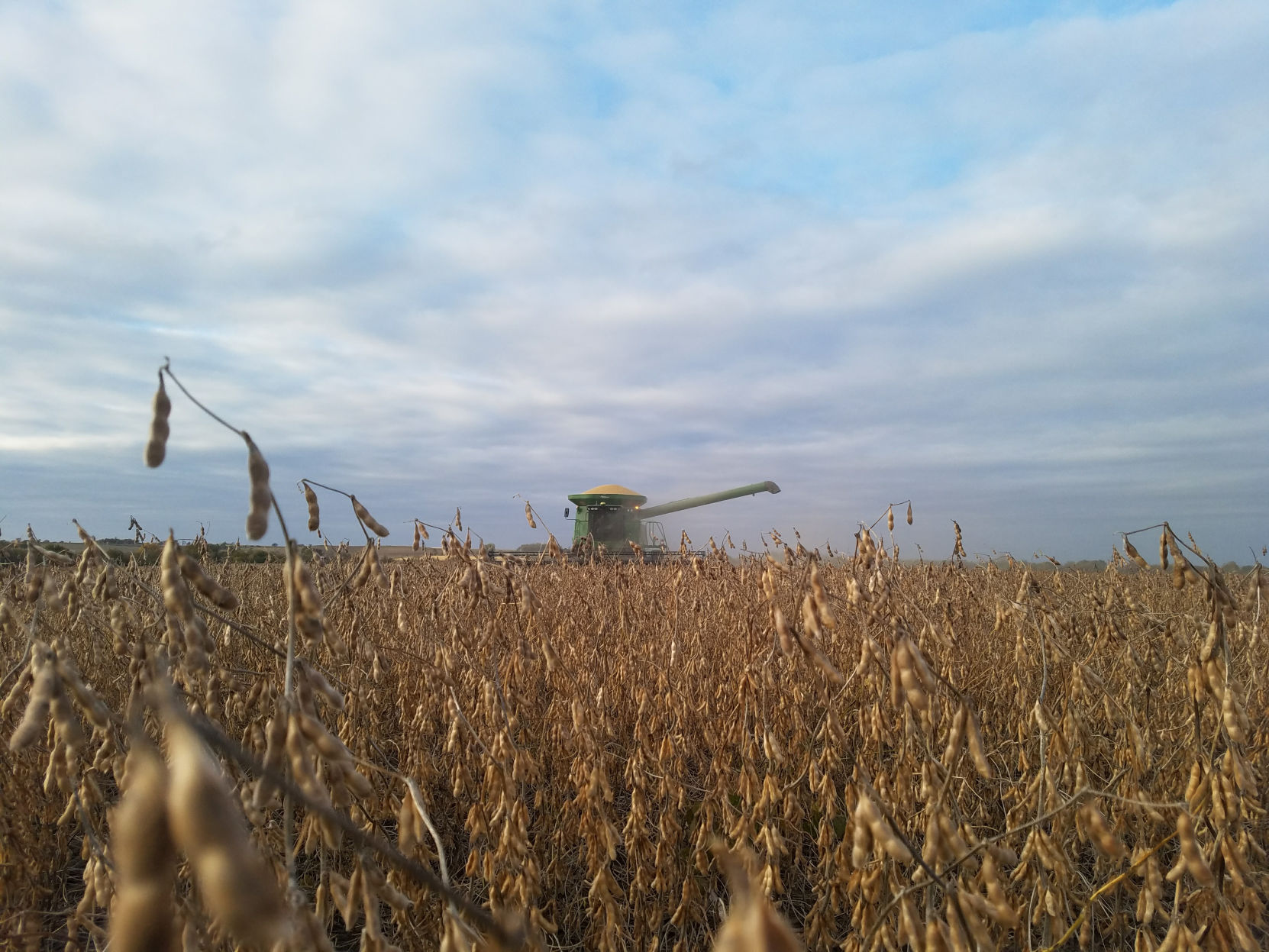Corn, soybean yields drop, according to latest WASDE report

The United States Department of Agriculture’s Oct. 14 World Agricultural Supply and Demand Estimates showed yields for both corn and soybeans dropping. Total U.S. corn production stood at 13.09 billion bushels, 2.7% below last year’s estimate of 15.07 billion bushels, but still relatively high.
Jim Mintert, director of the Center for Commercial Agriculture at Purdue University, said the drop was “in the middle of what the trade was expecting.”
Most states showed yield reductions, however, some severe, showing the effect of ongoing drought. Texas showed a yield drop of 21.9% from last year, Oklahoma a 16.7% drop, and Kansas a 17.3% drop. Farther north, the drought was not as severe. Among the High Plains states, North Dakota saw yields go up, by 34.3% or 100 million bushels, and Minnesota’s yields rose by 182 million bushels, a record. Besides those states, only Illinois and Virginia saw yield increases, all the rest saw yield drops.
The yield reductions further tightened the market. Ending stocks stood at 8.1% of total usage—“the tightest carryover in some time” according to Mintert. Exports dropped to 2.15 billion bushels—again, a drop from last year’s 2.47 billion bushels but still relatively high. Competing major exporters corn ending stocks—Argentina, Brazil, S. Africa, Ukraine, Russia—stood at 1.9% of total world usage.
Soybean yields
Soybean yields for most states also declined, by well below industry expectations. “Yields aren’t terrible, just not as good as expected,” Mintert commented. Texas showed a 17.9% increase from the previous month’s estimates—but a 13.2% drop from the previous year. Kansas and Oklahoma both showed drops of more than 30% from the previous year. North Dakota showed a yield increase of 37.3% from the previous year.
U.S. soybean exports stood at 2.05 billion bushels, down from last year but still the fifth highest since 2005. Soybean ending stocks stood at 4.5%, versus 6.1% for last year.
The WASDE bumped up usage estimates for the 2021 crop, which partly offset reductions in the 2022 crop.
River terminals slowing
The ongoing low water on the Mississippi and Ohio rivers has affected basis prices in Indiana for both corn and soybeans, and presumably elsewhere. Normally at this time of year, access to river terminals bumps up basis prices, but this year it’s the reverse. Some river terminals were reported to be refusing cargoes as barges were forced to light-load barges and reduce barge tow sizes.
Nathan Thompson, associate professor of agricultural economics at Purdue, said river levels “will be a big factor over the next several months” in basis prices, as will concern about world demand—especially from China. He said river terminal basis prices were 60 cents to 70 cents below average for this time of year. “We lost river access just as harvest was getting underway, creating tremendous incentive to store.”
Basis was also weakening at ethanol plants, said Thompson. Inflation and an expected recession could cut gasoline usage this fall and winter.
Bunge to expand Indiana processing plant
Inside Indiana Business reported Oct. 7 that Bunge was planning to invest $445 million to expand its soybean crush plant in Morristown, Indiana, raising employment at the plant to 177. The existing Bunge plant opened in 1995 and processes 60,000 truckloads of soybeans annually. A Bunge official reportedly told a local planning commission that the move was related to a big bet the company is making on high-oleic soybeans that could be used in plant-based synthetic meat products.
Wheat outlook reduced
The global wheat outlook for 2022-23 wheat was for reduced supplies, consumption, trade, and stocks. Supplies were lowered by 1.9 million tons to 1,057.7 million, with reduced production for the U.S. and Argentina more than offsetting higher European Union production—although total world wheat production remains at a record.
Argentina’s production was lowered by 1.5 million tons to 17.5 million with reductions in both harvested area and yield due to continued widespread dry conditions. EU production was raised by 2.7 million tons to 134.8 million, mainly on higher estimates from Poland and Germany.
Global wheat consumption was reduced by 0.9 million tons to 790.2 million tons, as lower food, seed, and industrial use more than offset higher feed and residual use. World trade was lowered 0.6 million tons to 208.3 million on reduced exports by the U.S. and Argentina more than offsetting higher EU exports. Projected 2022-23 ending stocks are lowered 1 million tons to 267.5 million mostly on a reduction for the U.S.
David Murray can be reached at [email protected].


